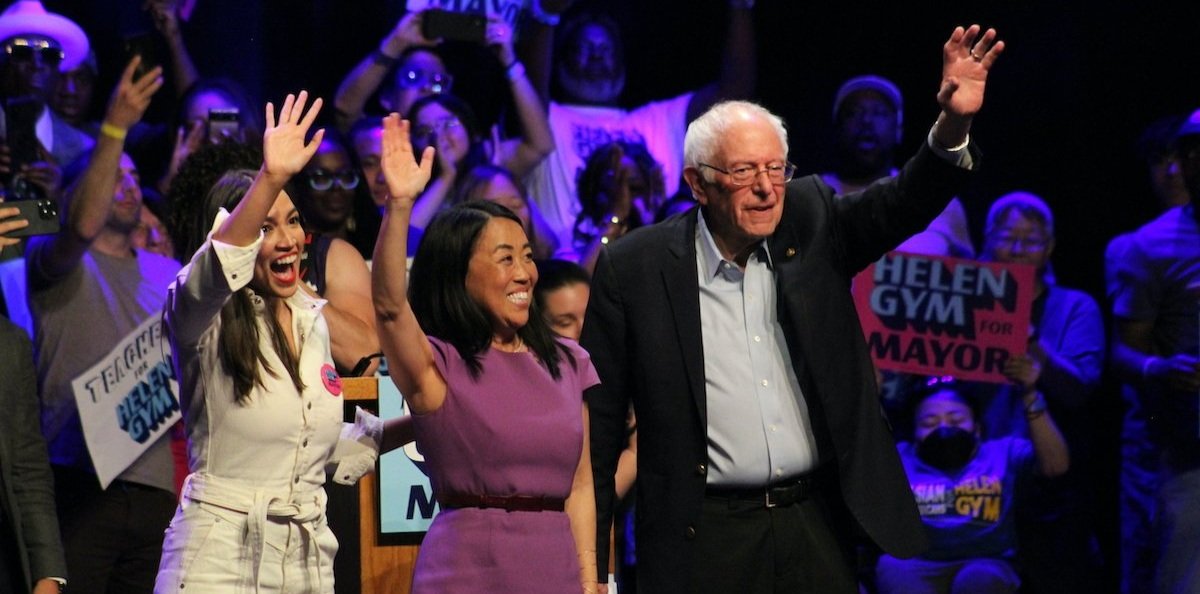The Far-Left Fifth
Mayoral races in deep-blue Philadelphia, Chicago, and New York City tell the same story as nonpartisan research: just 1 in 5 Democratic voters are in the Bernie-AOC wing of the party.
Bernie Sanders and Alexandria Ocasio-Cortez host a GOTV rally for Philadelphia mayoral candidate Helen Gym. Credit: Cory Sharber/WHYY
The Democratic primary for mayor in Philadelphia is yet another data point showing that ultra-progressive appeal is limited to 1 in 5 voters, even in the most Democratic geographies in the country.
Nonpartisan research has demonstrated that today’s outspoken and uncompromising far-left flank — the cohort of the party associated with uber-progressive leaders like Bernie Sanders, Alexandria Ocasio-Cortez, and the Squad — constitute roughly 6% to 8% of the population.
Pew Research’s breakdown of political typology puts the “Progressive Left” at 6% of Americans. That share rises with engagement: to 7% among registered voters, 8% of 2020 validated voters, and 12% of Democrats.
More in Common found that “Progressive Activists” constitute 8% of Americans and are disproportionately white, well-educated, and not concerned with safety.
Recent election results show that even in the bluest battlegrounds, the far-left faction only appeals to 1 in 5 voters. Take the 2023 Philadelphia and Chicago mayoral contests and the 2021 New York City mayoral race, where far-left leaders such as Sanders and AOC were highly engaged, drumming up support online and hosting lively GOTV rallies.
Philadelphia: 21.3% voted for Helen Gym in Democratic primary (87% of vote reported)
Chicago: 21.6% voted for Brandon Johnson in the first round of nonpartisan election
New York City: 21.4% voted for Maya Wiley in the first round of Democratic Primary
Despite the far-left base only making up one fifth of Democrats, uber-progressive candidates and leaders are overrepresented in the media’s dominant narrative about where the Democratic Party stands. There is a tendency to treat the Democratic coalition as if it is split evenly between the Bernie and AOC flank and the party’s moderate wing, when in reality only a fraction are on the far-left.
The power of the far-left depends on one of two things:
A media mirage in which it appears that the far-left has broader electoral appeal than in reality
Vote splitting in which the majority of the vote is spread between multiple mainstream candidates, enabling the far-left to win a primary or advance to a more favorable final matchup with just ~21% of the vote



